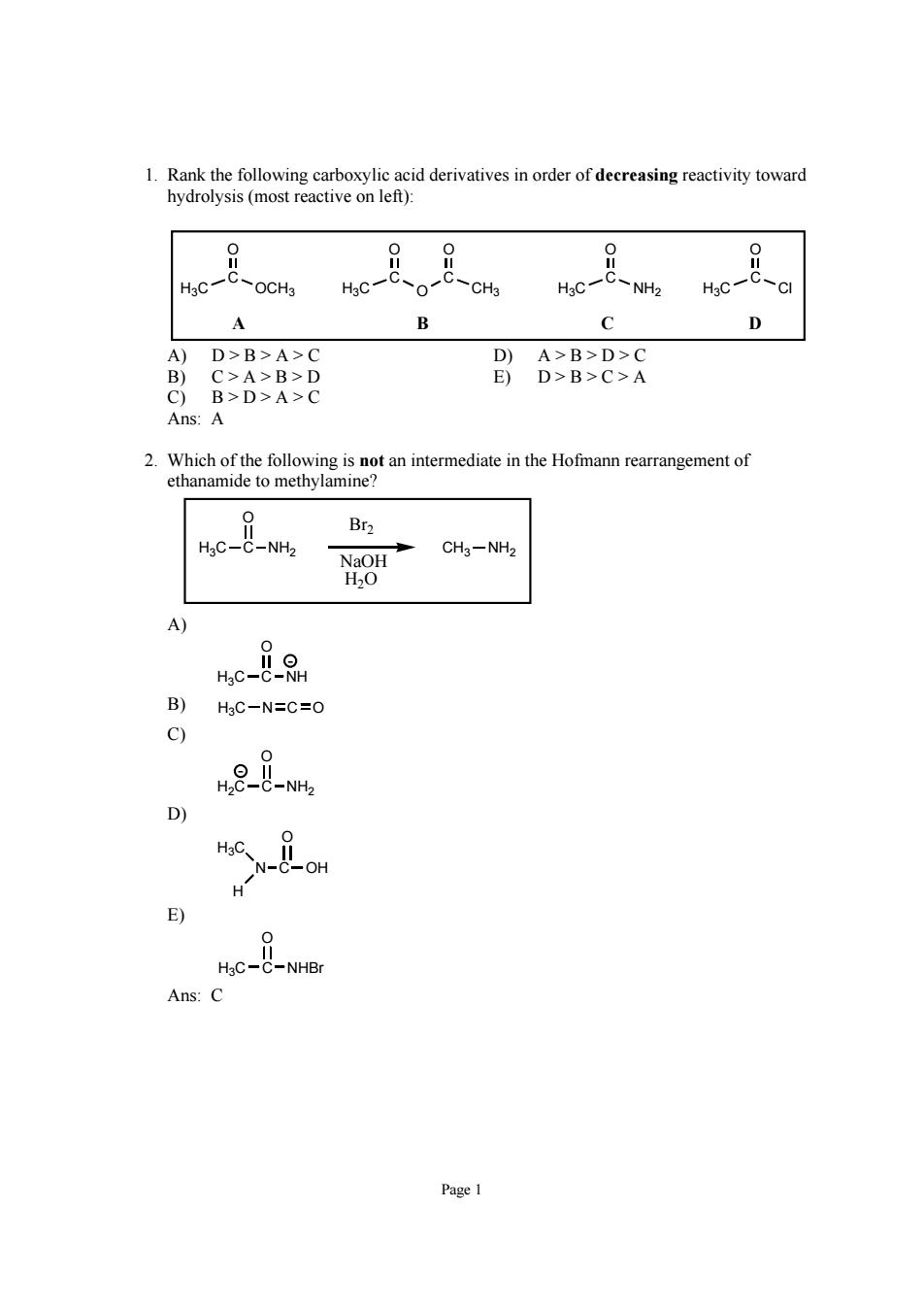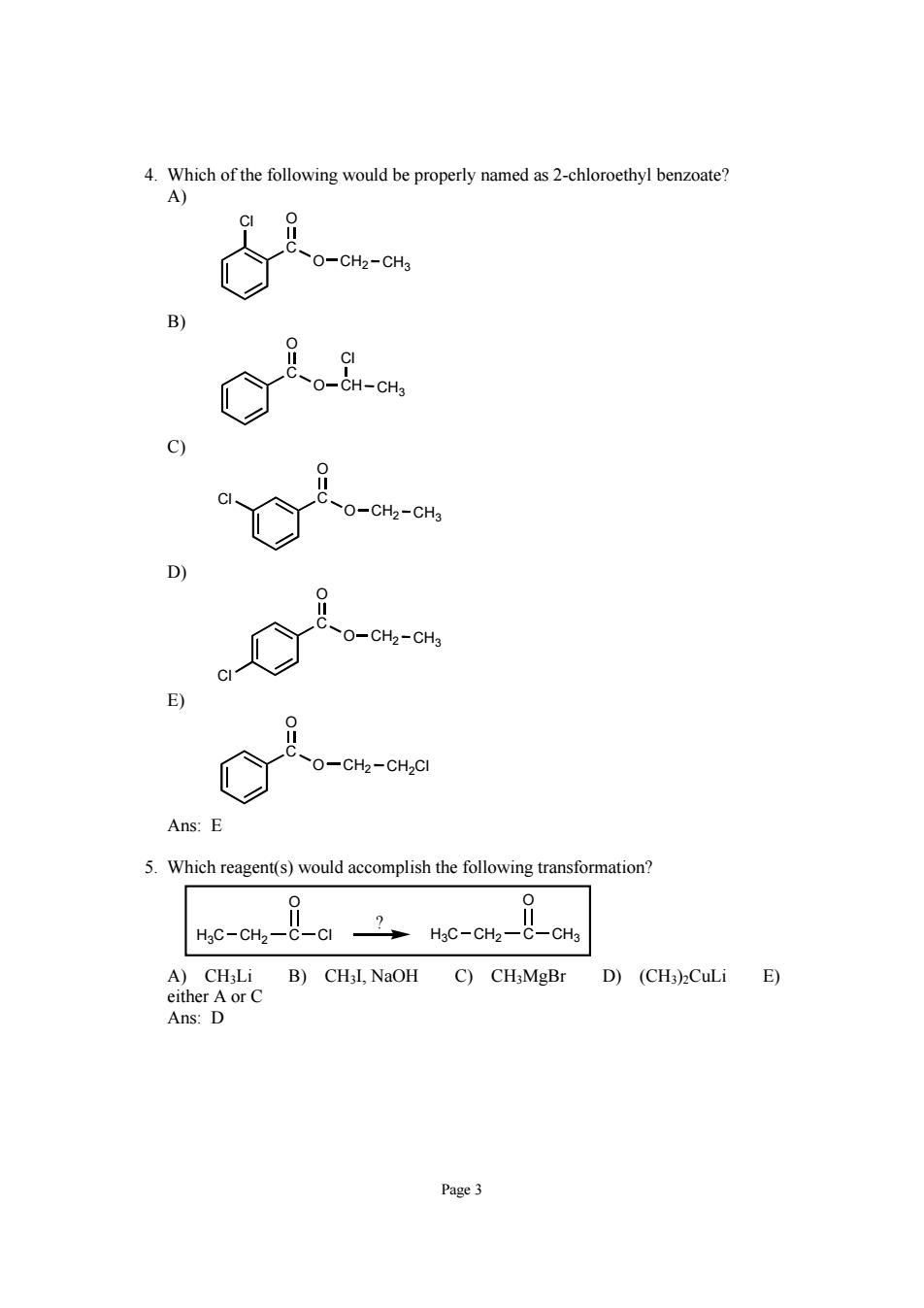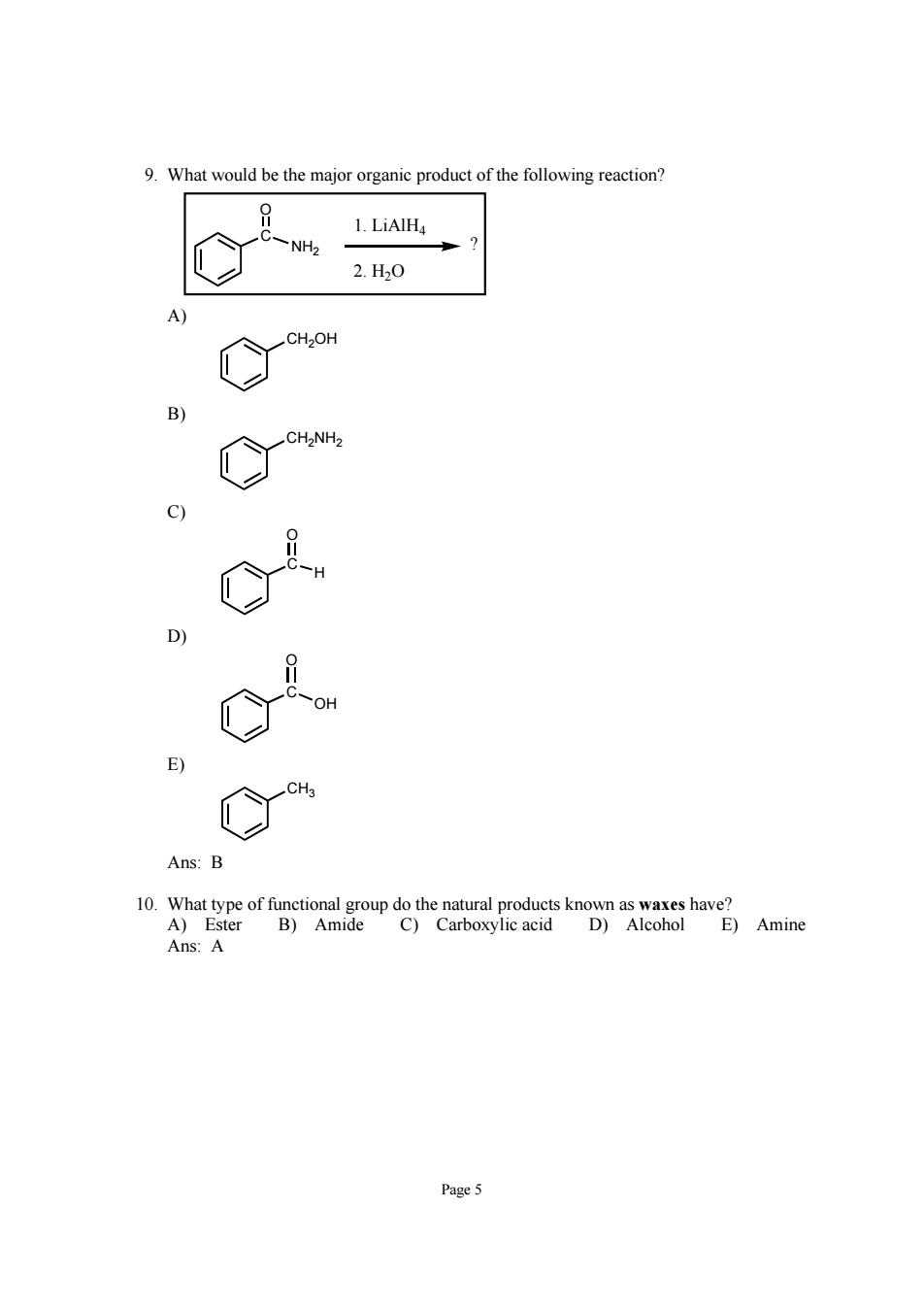
1.Rank the following carboxylic acid derivatives in order of decreasing reactivity toward hydrolysis(most reactive on left): 88 8 OCH3 HaC NH2 CI A B D A)D>B>A>C D)A>B>D>C B)C>A>B>D E)D>B>C>A C)B>D>A>C Ans:A Br2 8 CH3-NH hc-88 B) HgC-N=C=O n2- E) e8-Ne Ans:C
Page 1 1. Rank the following carboxylic acid derivatives in order of decreasing reactivity toward hydrolysis (most reactive on left): H3C C O H3C Cl C O OCH3 H3C C O H3C NH2 C O O CH3 C O A B CD A) D > B > A > C D) A > B > D > C B) C > A > B > D E) D > B > C > A C) B > D > A > C Ans: A 2. Which of the following is not an intermediate in the Hofmann rearrangement of ethanamide to methylamine? H3C C O NH2 CH3 NH2 Br2 NaOH H2O A) H3C C O NH - B) H3CN O C C) H2C C O NH2 - D) O H OH H3C N C E) H3C C O NHBr Ans: C

3.In the reaction shown below.which product(s)would be formed? H;C-CH2-C -OH CH,"OH HgC-CH2- HgC-CH2-c -OCH3 C) 16 HC-CH-CoH Page2
Page 2 3. In the reaction shown below, which product(s) would be formed? H3C CH2 C O OH ? H+ heat + CH3 18OH A) H3C CH2 C O OCH3 18 B) H3C CH2 C O OCH3 18 C) H3C CH2 C O OCH3 18 18 D) H3C CH2 C O OH 16 16 E) both A and B Ans: A

4.Which of the following would be properly named as 2-chloroethyl benzoate? A) O-CH2-CHa O-CH2-CHa O-CHz-CHa O-CHz-CH2CI Ans:E 5.Which reagent(s)would accomplish the following transformation? A)CH;Li B)CHL,NaOH C)CH;MgBr D)(CHa)2CuLi E) either A or C Ans:D Page 3
Page 3 4. Which of the following would be properly named as 2-chloroethyl benzoate? A) CH2 CH3 C O O Cl B) CH CH3 C O O Cl C) CH2 CH3 C O O Cl D) CH2 CH3 C O O Cl E) CH2 CH2Cl C O O Ans: E 5. Which reagent(s) would accomplish the following transformation? H3C CH2 C O Cl H3C CH2 C O CH3 ? A) CH3Li B) CH3I, NaOH C) CH3MgBr D) (CH3)2CuLi E) either A or C Ans: D

HC-C-N(CH2 A)One B)Two C)Three D)Four E)Five Ans:C 7.What would be the name of the following cyclic ester? 1 A)y-valerolactone D)2-methyl-B-butyrolactone B)B-butyrolactone E)2-methyl-y-valerolactone C)2-methyl-y-butyrolactone Ans:C .Whatouor the fact that the moecbewracemies easily espite having three chiral centers HOH.C actones are configurati onally unstable MoleceulelIosesCoet E Intra fication occurs easily This molecule is not chiral. s:D Page4
Page 4 6. How many different CH3 signals would you expect in the room-temperature proton NMR spectrum of the molecule below? H3C C O N(CH3)2 A) One B) Two C) Three D) Four E) Five Ans: C 7. What would be the name of the following cyclic ester? O O H3C A) γ-valerolactone D) 2-methyl-β-butyrolactone B) β-butyrolactone E) 2-methyl-γ-valerolactone C) 2-methyl-γ-butyrolactone Ans: C 8. What would account for the fact that the molecule below racemizes easily, despite having three chiral centers? O O H H HOH2C A) Lactones are configurationally unstable B) Molecule loses CO2 easily C) Enolization occurs easily D) Intramolecular transesterification occurs easily E) This molecule is not chiral. Ans: D

9.What would be the major organic product of the following reaction? 0 1.LiAlH4 -NH2 2.H0 3 C Ans:B Ans:A Page5
Page 5 9. What would be the major organic product of the following reaction? C O NH2 ? 1. LiAlH4 2. H2O A) CH2OH B) CH2NH2 C) C O H D) C O OH E) CH3 Ans: B 10. What type of functional group do the natural products known as waxes have? A) Ester B) Amide C) Carboxylic acid D) Alcohol E) Amine Ans: A